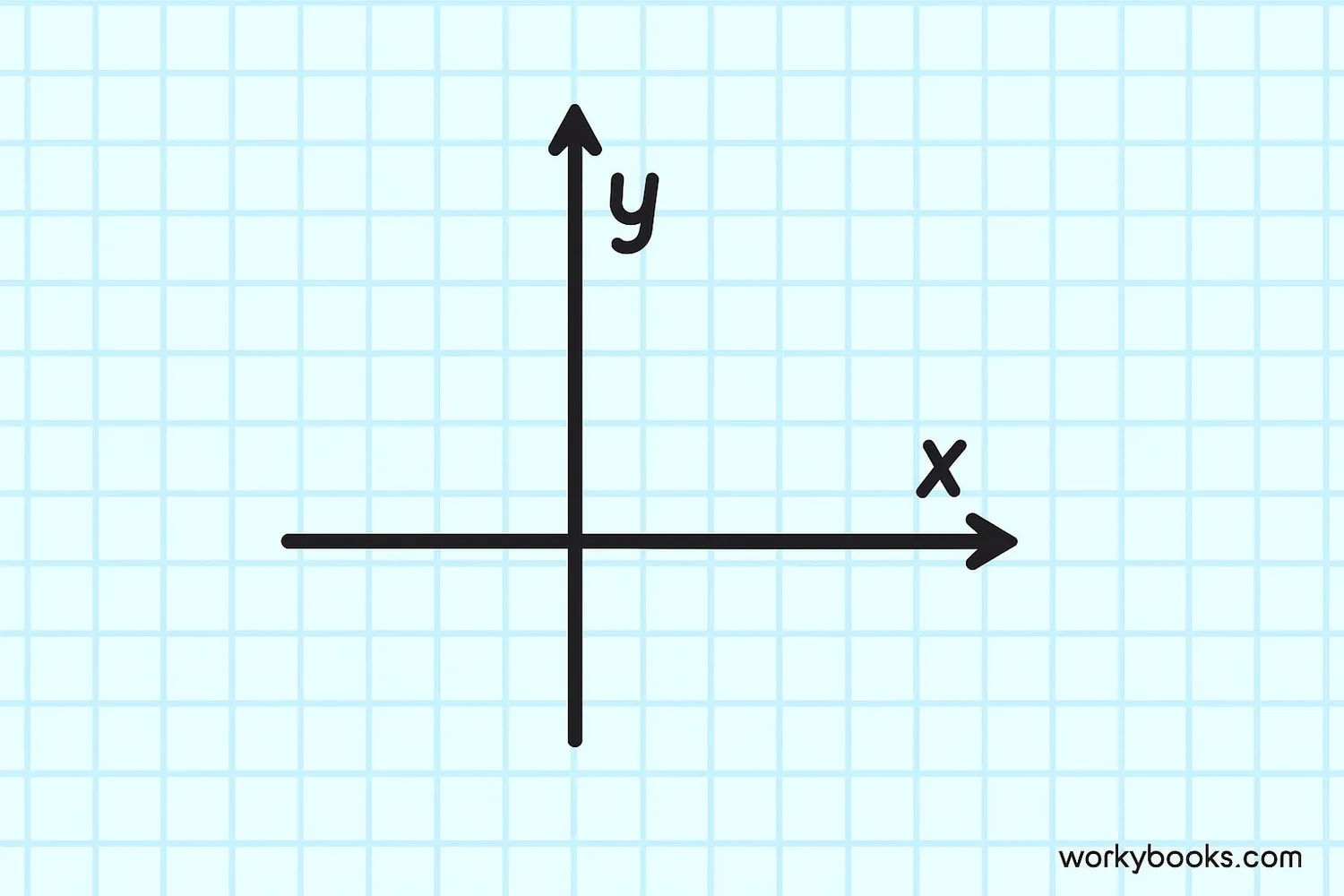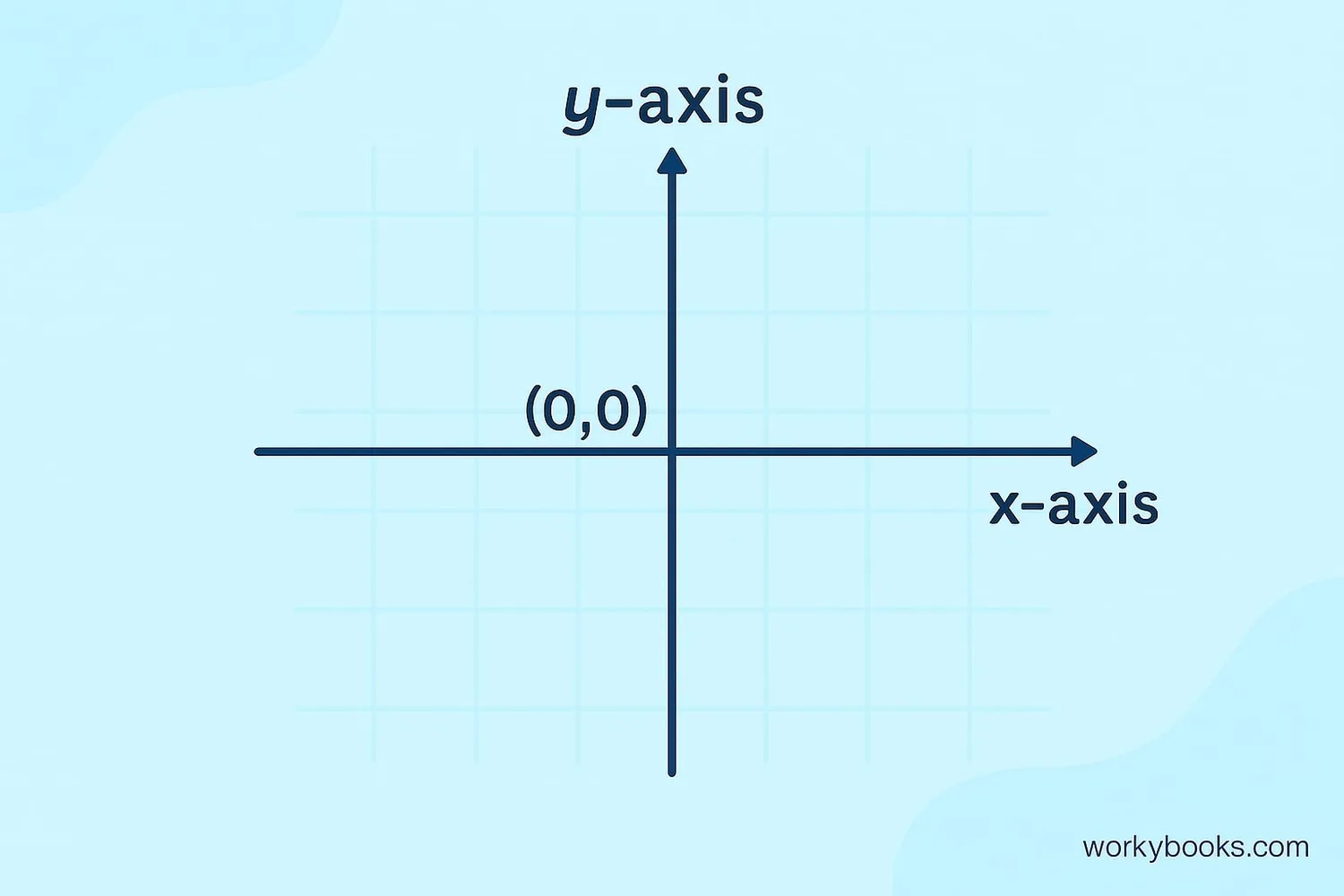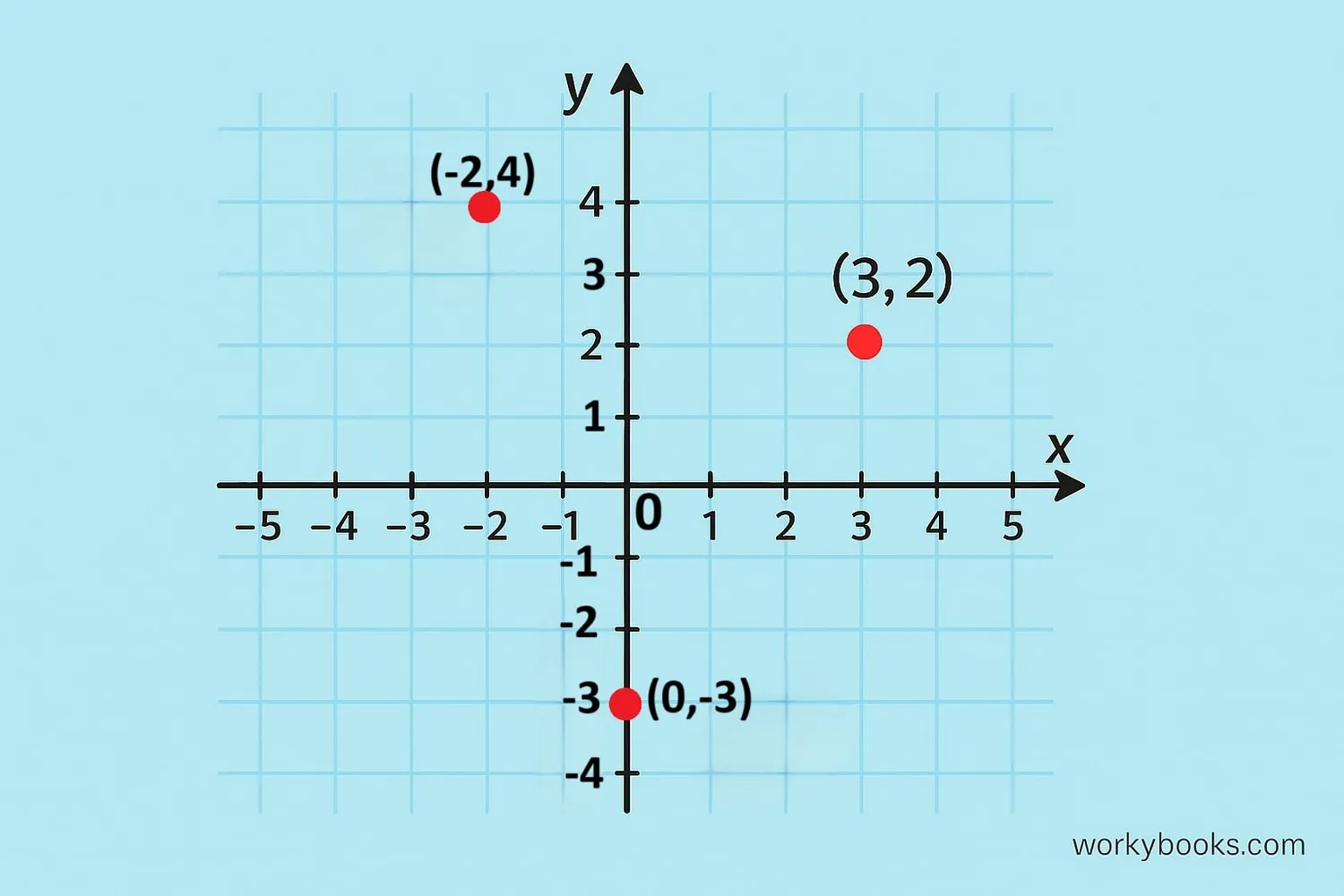Axis (Plural: Axes) - Definition, Examples, Quiz, FAQ, Trivia
Learn about the invisible lines that help us understand shapes and positions
What is an Axis?

An axis (plural: axes) is an imaginary straight line that helps us measure positions and understand shapes. Think of it like an invisible ruler that helps us find where things are located.
In math, we often use two axes together to create a coordinate plane. This helps us describe exactly where something is located by using numbers along these lines.
The word "axis" comes from the Latin word for "axle" - just like the axle of a wheel helps it spin in a straight line, mathematical axes help us measure positions in straight lines.
Key Concept
Axes are reference lines that help us measure positions and understand symmetry in shapes.
X-axis and Y-axis

When we use two axes together, we call them:
Two Important Axes
Y-axis: The vertical line that runs up and down. Positive numbers are upward, negative downward.
Where these two axes meet is called the origin, which has coordinates (0,0). Together, they form a grid that helps us locate any point using two numbers: an x-coordinate and a y-coordinate.
Remember
The x-axis is always horizontal, and the y-axis is always vertical. They always meet at right angles (90 degrees).
The Coordinate Plane

When we combine the x-axis and y-axis, we create a coordinate plane. This grid system helps us describe the exact location of points using number pairs called coordinates.
Coordinates are written as (x, y):
- The first number (x) tells us how far left or right to go
- The second number (y) tells us how far up or down to go
For example:
(3, 2) means: go 3 units right on the x-axis, then 2 units up on the y-axis
(-2, 4) means: go 2 units left on the x-axis, then 4 units up on the y-axis
(0, -3) means: stay at 0 on the x-axis, then go 3 units down on the y-axis
Try This
Draw your own coordinate plane and plot these points: (2,3), (-1,4), (0,0), (3,-2). What shape do they make?
Axis of Symmetry

An axis of symmetry is a line that divides a shape into two identical mirror-image halves. If you fold the shape along this line, both sides match perfectly.
Examples:
- A square has 4 axes of symmetry (vertical, horizontal, and two diagonals)
- A circle has infinite axes of symmetry (any line through its center)
- A heart shape has 1 axis of symmetry (vertical down the center)
Symmetry is everywhere in nature and art! Butterflies, leaves, and even human faces have symmetry. Understanding axes helps us see and create balanced designs.
Fun Fact
The letter "A" has one vertical axis of symmetry, while the letter "O" has multiple axes of symmetry.
Axis Knowledge Quiz
Test what you've learned about axes with this 5-question quiz. Choose the best answer for each question.
Frequently Asked Questions
Here are answers to common questions about mathematical axes:
Math Trivia
Discover interesting facts about mathematical axes:
Ancient Origins
The concept of axes dates back to ancient Greece. Mathematician René Descartes formalized the coordinate system in the 17th century, which is why it's often called the Cartesian coordinate system.
Earth's Axes
Our planet Earth has an imaginary axis too! It tilts at about 23.5 degrees and is the line around which Earth rotates, causing day and night.
Symmetry in Nature
Butterflies are excellent examples of symmetry. If you draw a line down the center of a butterfly (its axis of symmetry), both sides are mirror images of each other.
Space Navigation
Astronauts use 3-dimensional coordinate systems with x, y, and z axes to navigate in space. This helps them know their position relative to spacecraft and celestial bodies.


